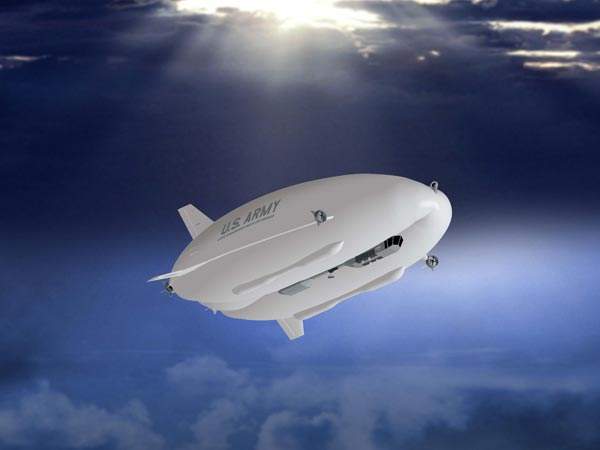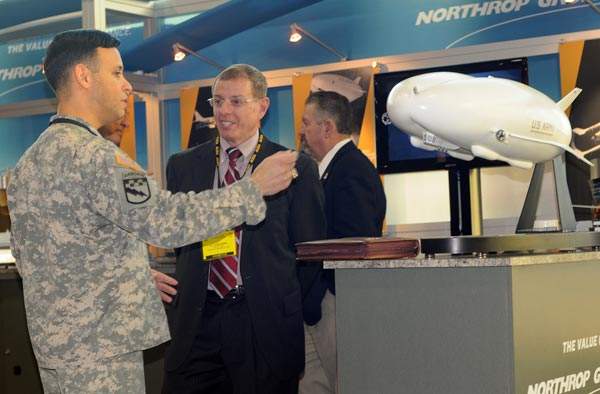The Long Endurance Multi-intelligence Vehicle (LEMV) is a long-range hybrid airship system, developed by Northrop Grumman, for the US Army. The hybrid air vehicle is capable of providing intelligence, surveillance and reconnaissance support for land forces.
In June 2010, the US Army Space and Missile Defence Command / Army Forces Strategic Command (USASMDC / ARSTRAT) signed a $517m contract with Northrop Grumman for three LEMV systems.
Under the agreement, the manufacturer is responsible for completing the design, development and testing within 18 months and should transport the vehicle to Afghanistan for assessment.
The LEMV successfully completed its first flight on 7 August 2012. The airship remained airborne for more than 90 minutes after it took off from the Joint Base McGuire-Dix-Lakehurst.
Long Endurance Multi-intelligence Vehicle development
Northrop Grumman has teamed-up with Hybrid Air Vehicles (HAV), Warwick Mills, ILC Dover, AAI Corporation and SAIC for the LEMV development.
HAV provides the base platform, while Northrop Grumman is responsible for system integration, flight and ground control systems.
The System Readiness Review (SRR), Initial Baseline Review (IBR) and Preliminary Design Review (PDR) of the vehicle were completed by November 2010. The Critical Design Review (CDR) was concluded in February 2011.
Upon completion of the ground and flight testing phase, the vehicle will be transported to Afghanistan in 2012 to take part in an army joint military utility assessment.
Design and features of Northrop Grumman’s LEMV
The LEMV’s design is based on the HAV304, a hybrid vehicle designed by HAV. The hull of LEMV will be made of laminated fabric.
It incorporates internal catenary system for holding a payload module. The aerodynamic shape of the hull delivers up to 40% of lifting for the vehicle.
The internal diaphragms are designed to allow minimal compartmentalisation to enhance fail-safe characteristics of the vehicle. The pressure control is accomplished by multiple ballonets at forward and aft, on either side of the hull.
The payload module placed in the centreline of the hull consists of three sections including flight deck, mid-body and aft-body. The flight deck includes a pilot station, single pilot control, large foils, a fuel control system and payload compartment. The mid and aft bodies accommodate universal load beam and fuel tanks respectively.
LEMV has a length of 91m, width of 34m and a height of 26m. The envelope volume of the air vehicle is 38,000m³. The vehicle can carry multi-intelligence payloads, such as sensors, ground moving target indicator radar, full motion video, signal intelligence and communications relay systems.
The vehicle allows integration of different types of exchangeable payloads, to support wide variety of missions. It can be integrated with a universal ground control station with 100% interoperability and with the distributed common ground system-army (DCGS-A).
Engines and landing gear of the long-range hybrid airship system
LEMV is powered by four 350hp 4l V8 direct injection diesel engines, two forward of the hull and two aft of the hull. Equipped with supercharged induction system, each engine is assembled in ducts with blown vanes. The configuration allows thrust vectoring for optimum control on the motion of the air vehicle.
LEMV is fitted with a bow thruster for low-speed control and loitering capability. The vehicle can supply up to 16kW of electrical power for payload.
Pneumatic tubes are fitted at the bottom of the two outer hulls for amphibious capability. The take-off / landing operations are supported by ballonet fans using a hull pressure system. The vehicle will require only a short runway to perform take-off and landing.
Performance of the US Army’s long endurance multi-intelligence vehicle
LEMV can be optionally manned, remotely piloted or autonomously operated. It can fly at a maximum altitude of 20,000ft.
It is capable of carrying payload weight of 2,750lbs. It consumes about 3,500 gallons of fuel to remain aloft continuously for a period of 21 days.
The maximum range of the air vehicle is 2,400nm with 15,000lbs (heavy lift configuration). The vehicle can fly at a speed of 30kt and a dash speed of 80kt.
The Global Military Aircraft Market 2011-2021
This project forms part of our recent analysis and forecasts of the global military aircraft market available from our business information platform Strategic Defence Intelligence. For more information click here or contact us: EMEA: +44 20 7936 6783; Americas: +1 415 439 4914; Asia Pacific: +61 2 9947 9709 or via email.







